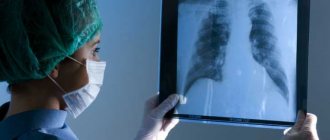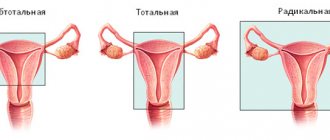X-ray is the most common method of examining the lungs. It is prescribed much more often than MRI or CT due to its low cost. The essence of this method is X-ray radiation, which passes through the human body and is reflected to varying degrees on the film depending on what tissue it passes through.
Many people believe that fluorography and radiography are the same thing. The principle of these diagnostic methods is indeed the same, but fluorography is less informative; with its help, only significant disorders can be determined, while the radiation dose during radiography is less.
Topic: What is shown in the photo?
Start reading a photograph by looking at what it shows. What people, places and objects are included in the photograph? (Be sure to look at the edges of the photo, too.) List the elements and group them (mentally or on paper) into logical categories. See if there is any action. If so, how do the objects in the photo interact with each other - is there a connection between the characters? Are they touching each other or looking at each other? Is it possible to trace this or that ordering of objects? Logic of plot development?
The photo below features a boy, a ball, a half-open entrance, a camera, and some signs. There are also windows, a canal, railings, steps, lots of sun and some shade. A boy plays with a ball; there is a relationship between the boy and the ball. There is also a connection between the Carabinieri (police) sign, the entrance and the security camera. The canal, windows, steps and street represent the environment. There is no relationship yet between the boy, his ball and the police, but the anticipation that this relationship is about to emerge adds palpable tension to the photograph.
Dawn Oosterhoff
When looking at a photograph, be sure to think about what is not there. Can you assume that the missing items exist but were left out intentionally or out of necessity? For example, in the photo above, the shadow on the ground suggests that there is a large tree behind the frame, but in this photo it would be impossible to include that tree. Also missing is a playmate. Is the boy playing with the ball himself or is the photographer deliberately excluding his playmate?
When to start panicking and the main nuances
There is no need to panic at all. Regardless of the results of the x-ray, an emotional breakdown only aggravates the patient's condition. However, you cannot reassure yourself if there is serious pathology in the photographs.
Changes in radiographs that require special attention:
- the appearance of ring-shaped shadows or spots;
- sharp darkening of one lung against the background of increasing symptoms of respiratory failure;
- the presence of fluid in the pleural cavity.
These symptoms are the first to alert doctors. However, the presence of other pathological changes also requires verification and selection of adequate therapy.
Form: How is the photograph composed?
The nature of photography forces us to work with the frame, deciding what to include and what to exclude from the frame. Within this frame, we use various techniques to lead viewers' eyes from one object to another and to highlight certain objects relative to others. These compositional techniques indicate what is important in the photograph and what the photographer is trying to tell us.
Pay attention to what the photographer decided to emphasize in the frame and using what method. How does the photographer direct our gaze? Analyze the position of the subject within the frame, the use of leading lines, depth of field and focus. What is the focus?
Sometimes a photographer may deliberately organize subjects before taking a photograph. For example, in the case of a still life or a portrait. In other cases, the photographer is faced with a situation in which he is unable to influence the arrangement of objects, and then he must choose a perspective, an angle of view that will help organize the space inside the frame. To see how a photograph is structured and organized, try turning it upside down or imagining it as a pattern of spots and lines rather than a depiction of three-dimensional space. What shapes do you see? Are there lines or geometric shapes in the photo, and are they repeated?
In the following image, the photographer uses lines and shapes to lead the viewer past the boy in the foreground to the second person who is the subject of this photograph. The line of chairs in the foreground, the edge of the light coming from the distant windows, the floorboards all point to the grandmother who sits in the center right. This is a compositionally strong point in the frame. The photographer also uses an arch to create a frame around the grandmother and the boy's parents, seated at the back of the frame. If the viewer's gaze moves past the grandmother to the parents and windows in the background, the line created by the furniture along the right wall brings the viewer's gaze back to the grandmother. The photographer's composition tells you that the grandmother is the head of a family with three generations.
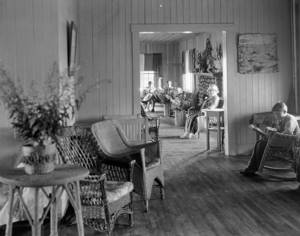
Canadian National Railways, Library and Archives Canada, e010860630.
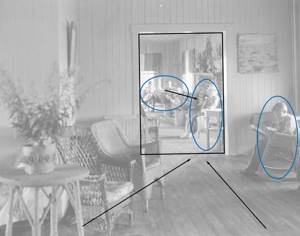
Light and shadow are also objects in a photograph, so be sure to consider them when reading the photo. Notice where the light and shadows are located. What are their forms? How are light and shadow positioned in relation to the frame of the photograph? What was placed in the light and what was placed in the shadow. What can light and shadow tell us about photography and its history? For example, in the photo above, light comes in from the windows in the background, “washing out” the parents in the glare, but perfectly illuminating the grandmother. The boy who occupies the largest physical space in the photograph is in shadow. There is light from the window behind him, but it is a weak light that does not illuminate the boy's face or the book he is reading. What does light and shadow tell you about the boy and his place in the family?
Conclusion
On the one hand, it is much easier to “extract” image details from the shadows, but noise inevitably creeps in; It is impossible to return details from overexposure, but a slightly overexposed (up to +1 exposure stop) photograph can be brought to a decent appearance without the risk of noise.
This is what I personally do (this does not mean that this is the only correct option).
1. When shooting, I avoid overexposure in areas important to the subject.
2. In critical situations, I prefer to slightly overexpose the frame to avoid strong noise when trying to pull out underexposed shadows. Then, during processing, I dim the lights, returning them to “normal”
Technology: what materials and processes were used?
Pay attention to the materials and processes used to create the art. For photography, this includes equipment (camera and lens), recording medium (digital or film, if film, size and type), developing or retouching process, and presentation of the final result (printed or web page, if print, size and type paper, frame).
Historical photographs will be in black and white due to limitations of technology, but modern photographs may be in color or black and white. Think about the choice of photographer and what that means for the story the photographer wants to tell. If a photograph is taken on film, even the choice of film type can significantly affect the image of the subject. Is the film high contrast and grainy, or is it low speed with wide dynamic range? If the photo is in color, have the colors been enhanced or changed, or if the photo is black and white, has it been tinted? Was the photo taken using a smartphone or large format camera? Did the photographer use a specific lens, such as a fisheye, to highlight something in the frame?
When considering photographic technology, also consider the photographer's choices in the context of the standards and practices of photography at the time the photograph was taken. A modern photograph presented in black and white indicates a conscious choice by the photographer, but the same photograph taken seventy or eighty years ago will necessarily be in black and white due to the technology of that time. Likewise, a modern photographer using collodion plates, for example, adds layers of meaning to a photograph.
In the following photograph, it is impossible to tell whether the frame was originally shot in color or black and white, but you can tell that the black and white photograph was tinted to create or enhance the atmosphere of the chilling cold of the landscape. The photo was taken using a wide-angle lens, allowing the photographer to create an impressive panoramic view. How does the choice of technique affect photography? How do you feel when viewing this landscape?

Dawn Oosterhoff
When considering technology, also consider where and how the photo is displayed. The same image can evoke different interpretations depending on whether it is hanging in a gallery, printed in a magazine, or displayed on a website page. How would you read the above photograph if you saw it as a banner in a travel magazine or in materials promoting environmental awareness? Would your perception be different if the photograph was printed on a 2 meter high canvas, framed and hung in an art gallery?
Where can I find a histogram of an image?
You can open a photo histogram directly in your camera or during processing in the “Histogram” information window in Lightroom and Photoshop. In Photoshop, the histogram is also presented in the Levels and Curves windows.
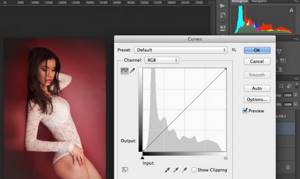
In a camera, the histogram is usually called up by pressing the Info button 2-3 times in a row in photo preview mode. This changes the type of preview view - instead of a full-screen photo, additional data about the file parameters and corresponding histograms appear.
Context: The circumstances in which the photograph was taken?
Context involves considering the interrelated conditions in which the photograph was taken and in which it is displayed. It includes the cultural environment in which the photograph was taken; for example, the time, social beliefs and cultural practices that led to the image and influenced the photographer. A still life with an abundance of seafood, tropical fruit and crystal can be assessed in terms of texture, play of light and shadow, chromatic combinations, but if the photograph was taken in the late 1800s, when seafood, tropical fruit and crystal were unusually expensive and difficult to obtain, the photograph will be an expression of wealth. What if the same photo was taken during a food crisis: how would that change your interpretation?
The next frame can be read differently depending on where it was taken. A photograph will tell one story if it is taken in a hospital waiting room, but a different one if the photograph is taken at a transit stop. What if the photo was taken in a park or on a busy train? How does history change if the man in the colorful robe turns out to be a relative, a friend, or a stranger?
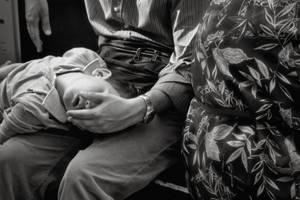
Dawn Oosterhoff
Establishing context can be quite challenging when it comes to reading photographs of conflict. Footage taken by a journalist assigned to a conflict group will have a different perspective than photos taken by an outside observer or a local journalist. Likewise, photographs taken secretly are likely to tell a different story than those taken by a press official. It is also important who publishes what photos and who photographs whom. Photographs published during the Arab Spring uprisings were taken by both foreign and local photographers. How will your cultural background influence your reading of the photographs?
Tim Hetherington, a British war photojournalist, is renowned for his attempts to express how the context of conflict shapes war photography and how war photography shapes conflict.

Tim Hetherington
Hetherington called this a "feedback loop": news, films and photographs of war influence young people, who then re-enact these images when they find themselves in conflict. Photos of this conflict shape news, films and war photographs. And so on.
Context also includes the photographer's intention in taking the photograph. Intent certainly influences what is read in a photograph. A photographer's work can also be shaped by influences independent of the photographer's intentions and conscious awareness.
Richard Avedon set out to present a fresh perspective on the American West when he took photographs for his series In the American West.
In the american west, Richard Avedon
However, Avedon's photographs of the hardships and suffering of the working class in the West have been criticized as exploitative because, according to critics, Avedon's view was unconsciously distorted by his success as a commercial photographer in the East. Will such criticism change your attitude towards photographs? Avedon suffered a serious illness before starting his project in the American West. Will this knowledge change your opinion of his photographs? What if, as has been argued, Avedon specifically asked certain people to appear in characters that were not typical for them?
The story a photograph tells is also influenced by who is looking at the photograph. We read images from the perspective of our own worldviews and values. I'm fascinated by visual storytelling, so I'd rather do documentary photography than abstract photography. Likewise, I would likely read photographs of the conflicts in Ukraine differently than Ukrainians. This does not mean that some points of view are more adequate than others, or even that the photographer's point of view is the only correct view.
Edward Weston spoke out against those who tried to attach sexual meaning to his photograph of a green pepper. Weston argued that the subject is being photographed for its own sake.
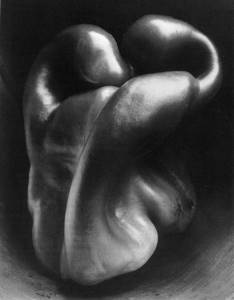
Edward Weston, PEPPER (NO. 30)
The fact that many still see sexual symbols in Weston's pepper says as much about the audience as it does about the photograph itself. But if Weston didn't intend his peppers to be sexual, does that mean those viewers who saw him were wrong?
“I am disgusted and tired of having my work labeled by those who bring to it their clearly deranged, irritable state: sexually frustrated, spewing inappropriate farts from undigested Freudian fermentation,” says Edward Weston. Do you think he is right or is he simply limited?
What is a lung x-ray and how does it differ from fluorography?
X-ray diagnostics, as an independent technique, appeared in 1895. Wilhelm Roentgen patented the rights to the invention of a tube of the same name, which emits microparticles that can penetrate soft tissue. A feature of the described phenomenon remains the different degrees of absorption of the corresponding rays. When a special film is fixed opposite the tube, structures through which the microparticles have passed will be displayed on its surface.
Interesting! Wilhelm Roentgen worked in parallel with Ivan Pulyuy (Ukrainian physicist). Scientists communicated with each other and shared their experiences. However, Roentgen quickly patented the results of his research, which ensured his place in the history of science.
At the end of the twentieth century, the radiation diagnostic method for the first time allowed doctors to see the internal structures of the patient during his lifetime. Over the course of several years, the procedure spread throughout the world, where it was used to determine the causes of coughs, joint pain, bowel movements, and the like. The technique was improved, as were the devices.
Read also: Cleft palate in an adult
Indications and contraindications for X-ray examination
What diseases or pathologies can be detected by chest radiography and fluorography?
What does a lung x-ray show, and what diseases can be detected with it?
Pathologies that can be properly diagnosed:
- bronchitis. In this case, the visual picture may not change, which is associated with the initial stage of development of the problem;
- inflammation of the lung tissue (pneumonia);
- lung cancer, benign neoplasms;
- tuberculosis;
- effusion pleurisy;
- fibrosis (pneumosclerosis) of the lungs – compaction of the parenchyma with loss of function;
- entry of air, liquid or blood into the pleural cavity - pneumo-, hydro-, hemothorax, respectively;
- emphysema;
- abscess;
- atelectasis;
- progression of alveolar pulmonary edema.
Preparation and the diagnostic process itself
Fluorography and x-ray of the lungs, used to identify the cause of shortness of breath, cough, hemoptysis, do not require special preliminary preparation. The patient undresses to the waist and takes a seat in a special apparatus.
The exception is patients with contraindications to radiological diagnosis of cough. Patients are allowed to be examined only after the relevant circumstances have been eliminated.
Content: What story does the photograph tell?
By considering the subject, form, technology and context of a photograph together, we can draw some conclusions about its content. By studying photographs, we can put into words the visual representation contained in the frame. We can often intuitively grasp the meaning of a photograph, but by taking the time to read it step by step and thoughtfully, we will gain more information both about the photograph itself and about what the photographer wanted to say with it. Visual literacy is equally important for taking photographs as it is for understanding when viewing other people's photographs.
Edward Weston argued that the subject is photographed for its own sake. Minor White countered that you can photograph an object for its own sake, but the viewer is free to interpret it for himself. And Alfred Stieglitz believed that the purpose of photography is the emotional response of the viewer.
Each of these photographers is right in their own way. Not every photo will contain complex content, and not every reading will reveal every nuance in an image. One thing is for sure - developing visual literacy skills will enrich you as both a viewer and a photographer.
Dawn Oosterhoff
Sante Dicom Viewer
1. Sante Dicom Viewer 4.0 is an excellent program for viewing DICOM files. Works with images obtained from CT, MRI and ultrasound. The program is possible, but access to many important functions is only available after purchasing a license.
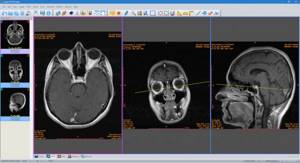
Benefits of the program: | Flaws: |
|
|






